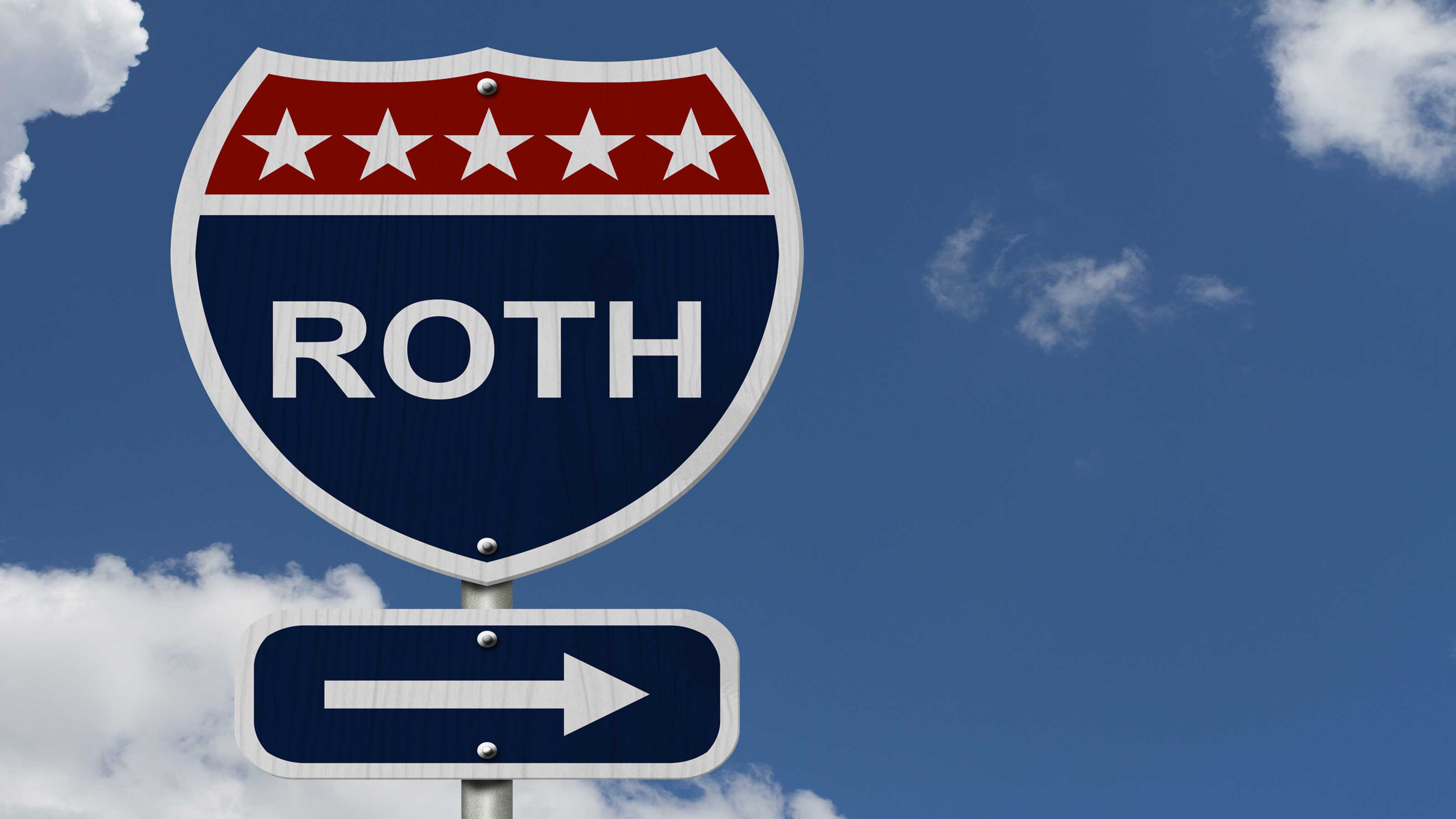6 Savings Tips for Millennials Who Want to Retire Rich
Take advantage of the decades you have before retirement to establish good savings habits and benefit from the magic of compounding.

When you're young and vigorous, retirement seems far off. Bills due today are far more demanding than a goal you won't reach for decades. But putting off saving is a mistake. "There's one advantage that millennials have over baby boomers, and that's time," says Kyle Ramsay, investing manager at personal finance site NerdWallet.
Forfeiting that advantage now puts you at risk of having to retire later than you want or under less-than-ideal circumstances. In fact, a recent NerdWallet study estimates that 2015 college graduates won't retire until age 75, compared with a current average retirement age of 62. Even if 75 doesn't sound like an unreasonable retirement age to you, reasons beyond your control, such as health problems or being laid off, may force you out of the job before you have enough savings to retire comfortably. Instead of planning to work longer, you're better off saving now. Here are six steps to get you started.
1. Create a budget that includes—and prioritizes—retirement savings.
With rising rents and big student-loan debts stretching their budgets, young adults may feel like they can't afford to save for retirement, says Ramsay. But you should make retirement a part of your financial plan as soon as possible. Any little pain you feel from tightening your budget and squeezing out some savings now will be much easier to take than realizing too late that you haven't saved enough.

Sign up for Kiplinger’s Free E-Newsletters
Profit and prosper with the best of expert advice on investing, taxes, retirement, personal finance and more - straight to your e-mail.
Profit and prosper with the best of expert advice - straight to your e-mail.
One rule of thumb is to save 10% to 15% of your pay for retirement. It's okay to save less than that; any little bit you can muster each month is better than not saving at all. Financial coach and planner Shanda Sullivan suggests starting to save as little as $5 each month. Then increase your savings by $5 every month until you're comfortable adding even more. "You won't even notice it," she says. "Increase it a tiny bit at a time, and you will find saving is a lot easier than you thought. It's just creating that habit of saving."
Getting started sooner rather than saving more later works out better mathematically, too. Let's say you're 30 years old. If you save just $100 now and add another $100 every month for the next 35 years, you'll wind up with $142,302, assuming a modest 6% annualized return. If you wait until you're 40 to start, even if you double your savings to $200 a month, you'll only hit $138,852 by age 65. (Of course, these amounts will not be enough to cover your retirement years, but you can see the benefit of saving a little now versus trying to catch up later.)
2. Capture your employer's 401(k) match.
If your employer offers and contributes on your behalf to a 401(k) or similar retirement plan, that should be where you save first. Definitely put enough in the account to capture the company match. "If you don't, you're leaving free money on the table," says Sophia Bera, financial planner and founder of Gen Y Planning.
For example, if your boss offers to pay 50 cents for every dollar you contribute up to 6% of your salary, which is a common policy, you should defer at least 6% of your pay to the account. In this example, your savings add up to 9% of your pay—6% from you and 3% from your employer. That leaves you just a bit short of the goal of saving 10% to 15% of your salary.
In 2016, you can contribute a maximum of $18,000 to a 401(k), 403(b) or similar plan. (People age 50 and older can add an extra $6,000 in catch-up contributions.)
3. Contribute to a Roth IRA.
If you don't have a Roth 401(k) option through your employer, or if you maximize your contributions to your traditional 401(k) (good for you!), your next stop for retirement savings should be a Roth IRA. On top of the Roth's tax benefits, you get the flexibility of being able to withdraw your contributions at any time for any purpose, tax- and penalty-free, in case of emergency. (You can only withdraw earnings without tax or penalty if you have had an account for five years and you are 59½ or older.) See Why You Need a Roth IRA.
You can open this individual retirement account through most banks and brokerages. To qualify, you must have earned income from a job and have a household modified adjusted gross income of less than $132,000 if you're single or $194,000 if you're married and filing jointly. If you're single and making less than $117,000 in 2016 (or married, filing jointly, with less than $184,000), you can contribute the maximum $5,500 a year to a Roth IRA. (The maximum contribution for people age 50 or older is $6,500.) You have until tax day in 2016 to boost your contributions for 2015.
4. Automate your savings.
The easiest way to save each month is to put your savings on autopilot. With your 401(k), your company moves pretax dollars out of your paycheck before you even lay eyes on the money. With a Roth IRA, you can set up automatic transfers from your bank to your brokerage account. "If you rely on yourself to manually put money in your savings account, it's probably not going to happen," says Sullivan. By automating your savings instead, you take away the temptation to spend those funds and guarantee that you pay yourself first.
5. Invest wisely.
Within your 401(k) and Roth IRA, make smart investment choices. "Expenses within your 401(k) investments can be high," says Sullivan. "Go with funds that have low expense ratios and that will give you a bigger return in the long run." She recommends selecting index funds across a range of asset classes for proper diversification. Because you're young and have time to take on more risk, if you can stomach the ups and downs of the market, you might consider building a portfolio of 80% to 100% stocks. See Start Investing Wisely.
6. Boost your savings regularly.
Be sure to increase the amount you save until you hit that target rate of 10% to 15%. Boost your savings each time you get a raise, and add any extra income, such as bonuses or cash from side gigs, whenever you can. "If you already have a set monthly budget, consider additional income as an opportunity to increase your savings," says Terrance K. Martin, director of financial literacy programs at the University of Texas-Pan American.
Get Kiplinger Today newsletter — free
Profit and prosper with the best of Kiplinger's advice on investing, taxes, retirement, personal finance and much more. Delivered daily. Enter your email in the box and click Sign Me Up.

Rapacon joined Kiplinger in October 2007 as a reporter with Kiplinger's Personal Finance magazine and became an online editor for Kiplinger.com in June 2010. She previously served as editor of the "Starting Out" column, focusing on personal finance advice for people in their twenties and thirties.
Before joining Kiplinger, Rapacon worked as a senior research associate at b2b publishing house Judy Diamond Associates. She holds a B.A. degree in English from the George Washington University.
-
 Planning for Health Care Costs in Retirement: A Comprehensive Guide
Planning for Health Care Costs in Retirement: A Comprehensive GuideMedical expenses aren't slowing down, and if you're not prepared, they can hit you like a ton of bricks.
By Bob Chitrathorn
-
 When Should You Hand Over the Keys — to Your Investments?
When Should You Hand Over the Keys — to Your Investments?The secret to retirement planning? "The best time to hand over the keys is before you’ve realized you need to hand over the keys."
By Maurie Backman
-
 What Is a 401(k) Retirement Savings Plan?
What Is a 401(k) Retirement Savings Plan?retirement A 401(k) is a retirement plan sponsored by an employer that offers employees tax incentives to save money for retirement from their paychecks.
By Ellen Kennedy
-
 Young Savers Can’t Assume Roths Are Right for Them
Young Savers Can’t Assume Roths Are Right for Themsavings Rules of thumb don’t tell the whole story. Truth is, sometimes a traditional IRA or 401(k) is the better way to go for young people. Here are some reasons for young savers to be hesitant about Roth savings vehicles.
By Jamie P. Hopkins, Esq., CFP, RICP
-
 How to Turn a Teen’s Summer Wages into Millions
How to Turn a Teen’s Summer Wages into Millionsretirement You’re never too young to open a Roth IRA if you earn money from a job. If you invest in a Roth IRA early—and continually over decades—modest sums can grow into seven figures.
By Kimberly Lankford
-
 Financial Advice for Millennials
Financial Advice for MillennialsFeature How does a personal-finance magazine appeal to a new generation in need of a solid education in the fundamentals?
By Mark Solheim
-
 10 Timeless Financial Tips From Knight Kiplinger
10 Timeless Financial Tips From Knight KiplingerFeature Sage advice about saving, spending and investing never goes out of style.
By Knight Kiplinger
-
 Why You Need a Roth IRA
Why You Need a Roth IRARoth IRAs With this indispensable savings tool, your money grows tax-free, you can invest in almost anything and you get several cool perks.
By Rocky Mengle
-
 How a Student’s IRA Is Counted for Financial Aid
How a Student’s IRA Is Counted for Financial AidIRAs Money withdrawn from an IRA in the student’s name is hit hard by the federal financial aid formulas.
By Kimberly Lankford
-
 6 Smart and Simple Money Tips for New Grads
6 Smart and Simple Money Tips for New GradsBudgeting Start your journey to wealth creation on the right foot.
By Marguerita M. Cheng, CFP® & RICP®